When: 6-10 June 2017
Who: Liane, Mark, Jerome and I
About 4 years ago I set the desktop wallpaper of my work computer to some incredibly purple lavender fields stretching out in front of a Cistercian abbey in Provence – Abbaye Notre-Dame de Sénanque. The intense colour of the fields and the mysterious atmosphere of the building slowly started building a desire to visit this place. Years have passed by and I’ve travelled to many different places since, but the idea to go to Provence (and particularly to the abbey in Sénanque), has stayed with me. Finally, this year, I decided to make my little dream come true. I planned this trip carefully (by this I mean that I bought the flight tickets in February, when still ridiculously cheap) and most importantly, I made sure that our visit fell onto the lavender season.
Abbaye Notre-Dame de Sénanque
June came fast, and before we knew it, we’d arrived in the land of sun, wine and, of course, lavender. After visiting Aix-en-Provence, Orange, Chateauneuf-du-Pape and Apt (which I’ve written about here), I couldn’t wait to finally see the place, being the impetus for the whole trip. The 30 min drive from Apt (where we were staying) through the colourful Provencal countryside only served to add to my already sky-high level of excitement. We were passing through the oldest wine producing region in France, where Greeks planted the first grapes in about 600 B.C.! I had the feeling that, even though the ancient or medieval architecture was scattered all over the region, the history of Provence was predominantly found in its wine flavours. Especially in rosé, that takes the biggest share of all the Provençal wines. I was going into raptures about the infinite fields of vines, here and there dotted with purple splashes of lavender, when we eventually made it to the Sénanque abbey. The heat was unbearable, and any normal person was probably close to fainting, but I could hardly stop myself from running to see this monastic building. We made it! The abbey was as impressive as I had imagined and the lavender fields… were still green. Sometimes even the best organisational skills can’t win over Mother Nature. With or without the purple fields of lavender, the site had its own, very distinctive charm. I don’t know if it was the fact that we were sauntering around the 12th century buildings, or the sacred atmosphere created by the Cisterian monks that still live in the abbey growing their lavender and tending honey bees, or something else; whatever it was, it made this place special and the visit definitely worthwhile.

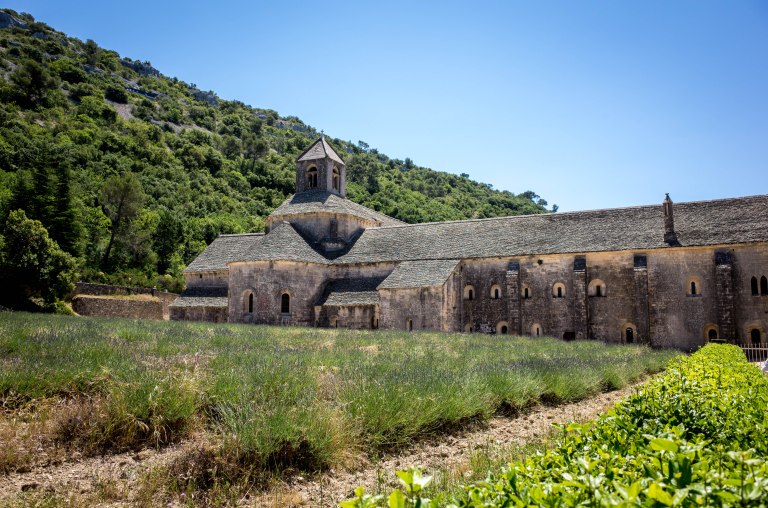
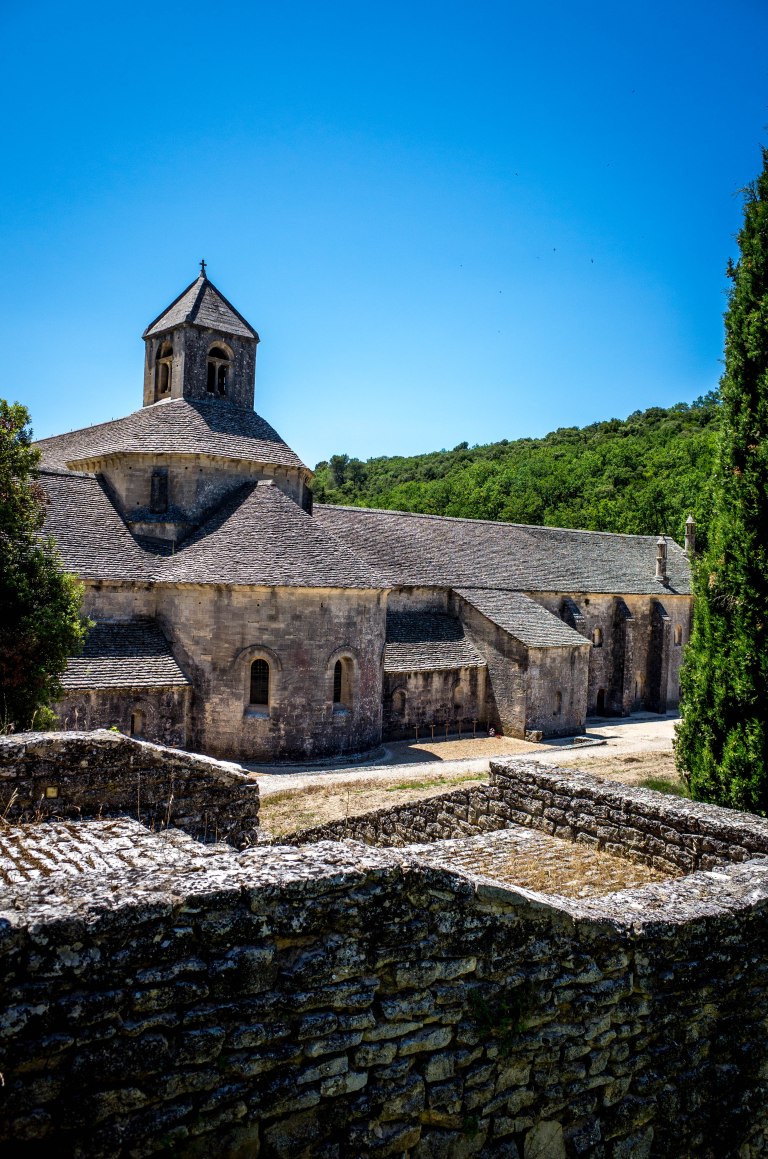
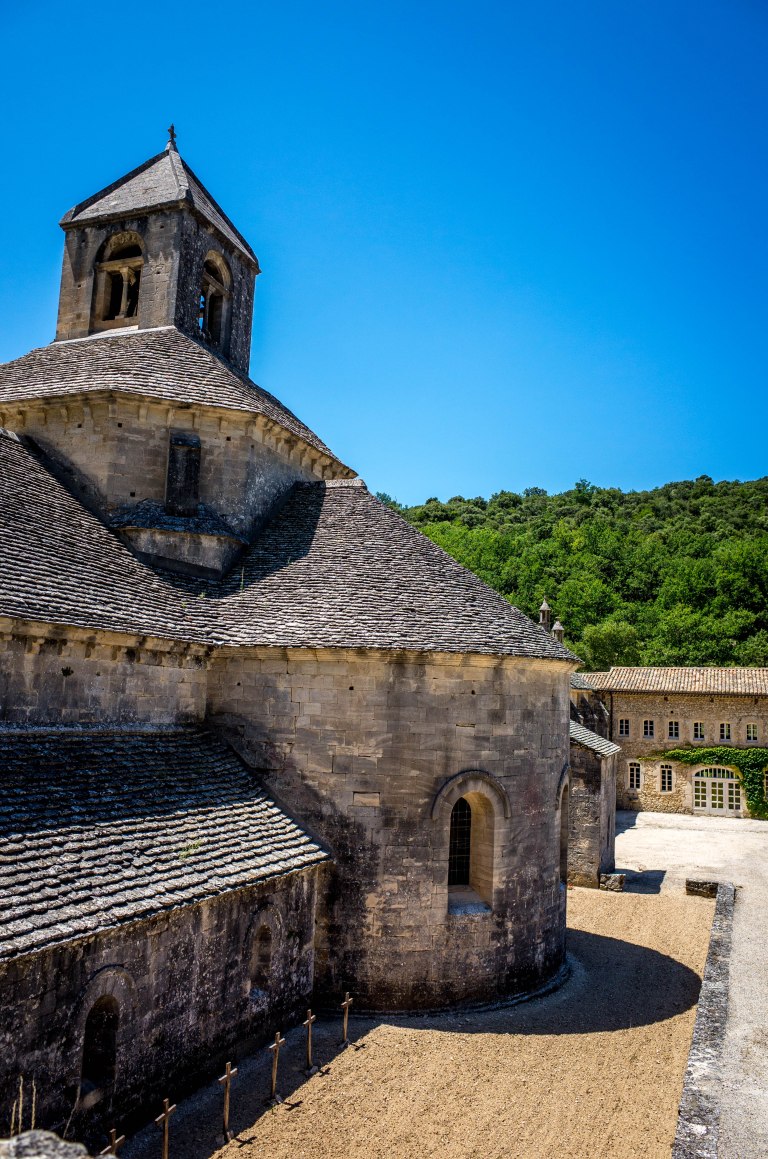
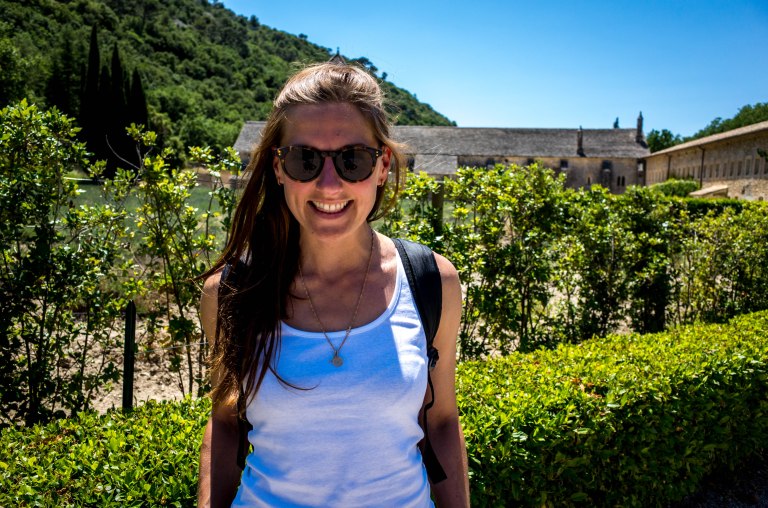
Gordes
We were really lucky that, on the way to Sénanque abbey, our route took us south from Apt on the D15 road. Serendipitously, we ended up at the most famous view point of the village Gordes, a location on our Provencal bucket list. Gordes is considered to be one of the most beautiful villages in France, which is something I certainly wouldn’t disagree with. After taking few sharp turns, exactly below Bel-Air rock, we were rewarded with a magnificent view of this hilltop village. The white stone houses finished off with terracotta roof tiles looked as if they were a natural part of the enormous calcareous rock from the Vaucluse Mountains, that we were standing in front of. Set on the top of the hill church (Eglise Saint Firmin) and 10th century castle (Le Château de Gordes) were proudly overlooking the surrounding valley. Nothing in this picture looked accidental and I was curious to see what other delights were hidden inside of the village. After visiting Sénanque abbey, we headed to Gordes for lunch. Unfortunately it turned out we were too late, having arrived at 3pm. I keep forgetting that France, unlike Poland or the UK, is quite strict about their meal times. We managed to silence our stomachs for a while but the sightseeing hunger was stronger. Without much knowledge of where to go and what to see, we followed the narrow cobblestone streets, called ‘callades’, that guided us through the village. With every couple of steps I was amazed with the breathtaking, infinite views over the valley carefully hidden between the stone houses. Their windows were decorated with blue, brown or red pair of shutters. With a smile on my face I was inhaling the warm air, filled with an incredible scent of the fully blossomed flowers. Just when I thought that I reached the highest level of happiness, somewhere off the Route Neuve, in a tiny bakery, we found pistachio ice cream. The delicate nutty flavour and a perfect creamy consistency took me back to Rome where we had had the best ice cream. Ever. With a camera in one hand and delicious Italian quality ice cream in another we were peeking in every nook and cranny of Gordes. I really couldn’t have asked for anything else. The rest of the group, on the other hand, could. It was time for some wine tasting. A wine shop in Casa Rosario welcomed us with a local light and bitter rosé: Etienne Imbert from Gordes. In my opinion, it was not something that the region should be proud of. We moved to a slightly fizzy and dry white wine (Bastidonne from Ventoux) and eventually topped the tasting off with very dry and tart Mayol, a red wine from Luberon which had a strong, blackcurrant flavour. This short wine tasting was a perfect finish to our visit in Gordes and a great warm up activity to the mega wine tasting in La Cave Sylla in Apt.
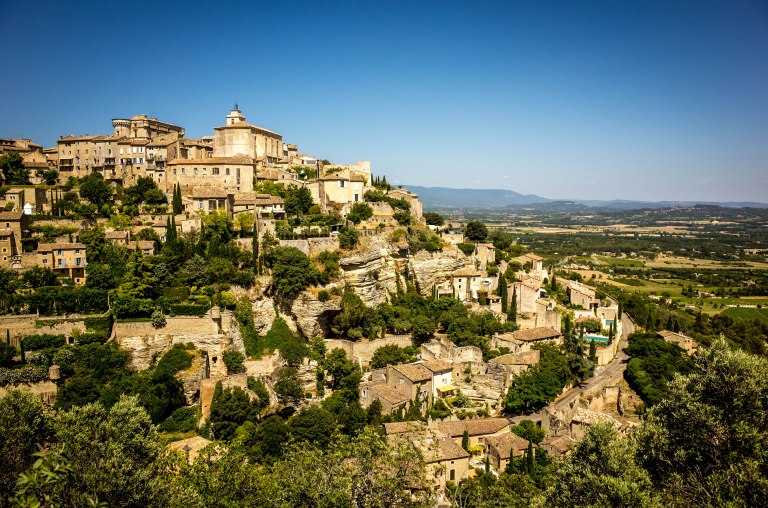
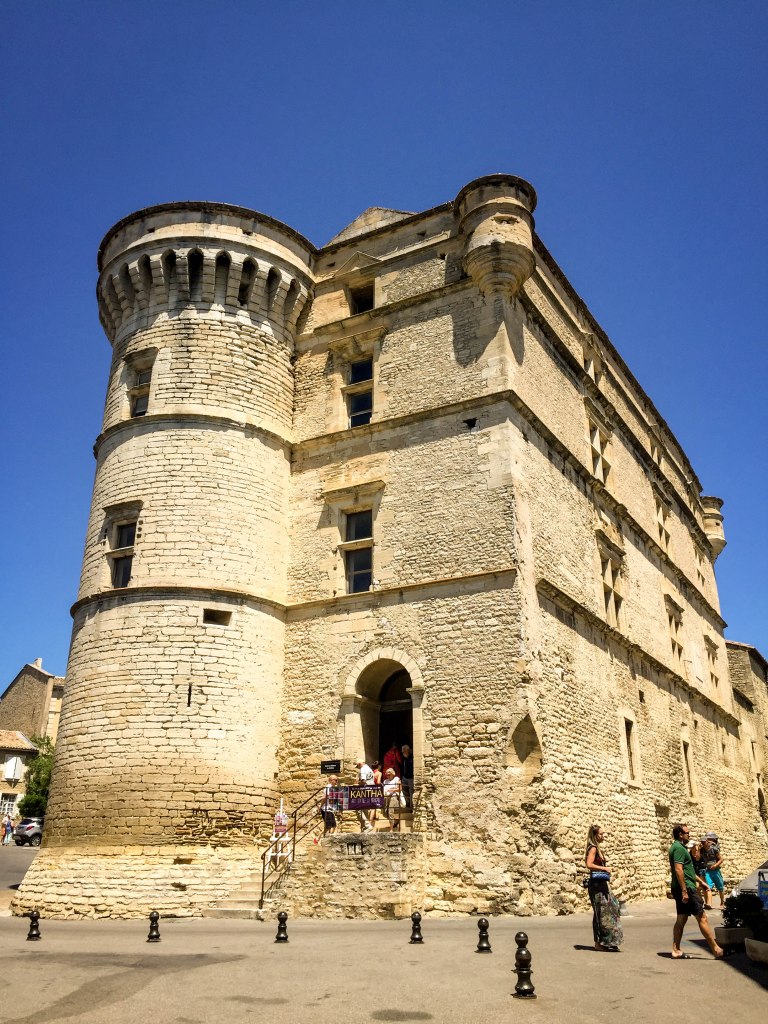

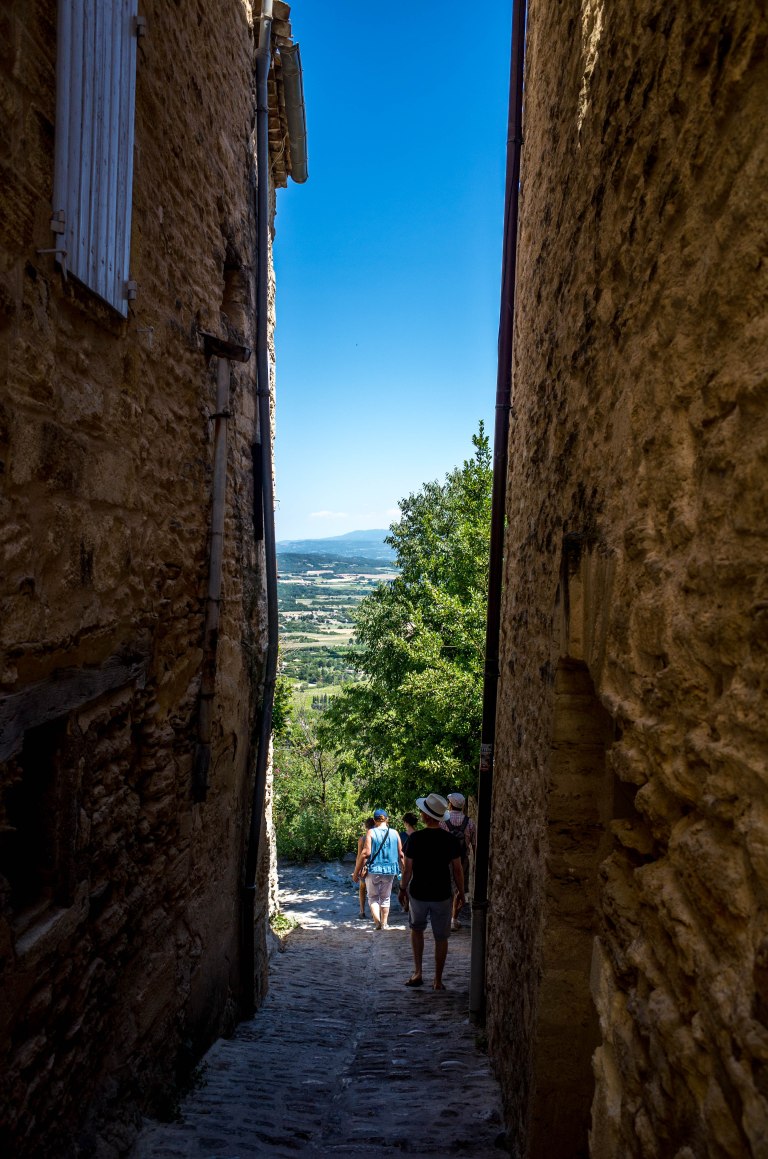
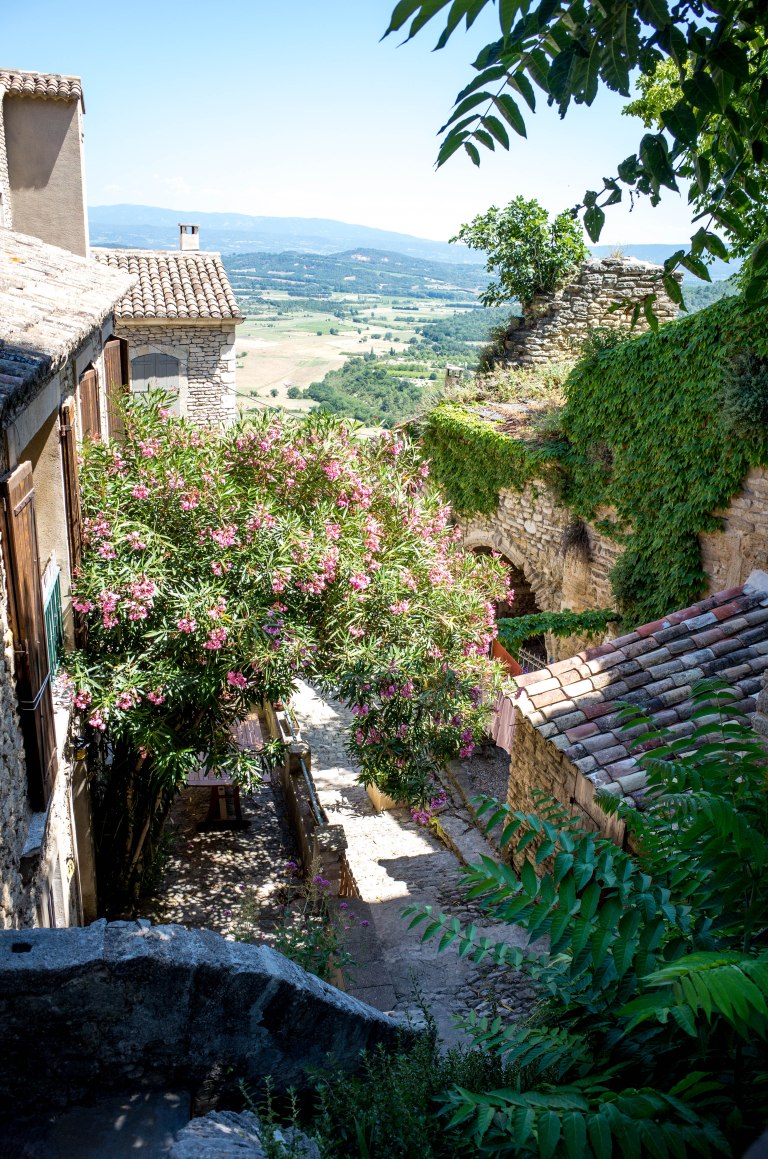

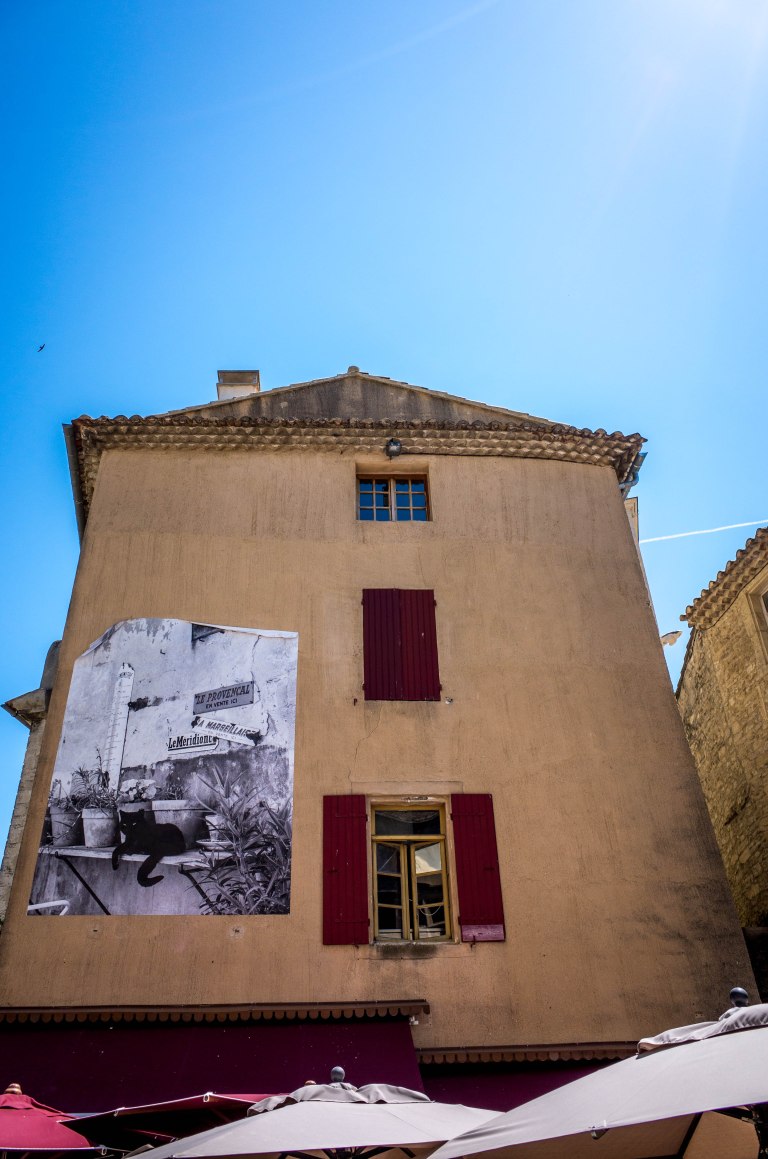
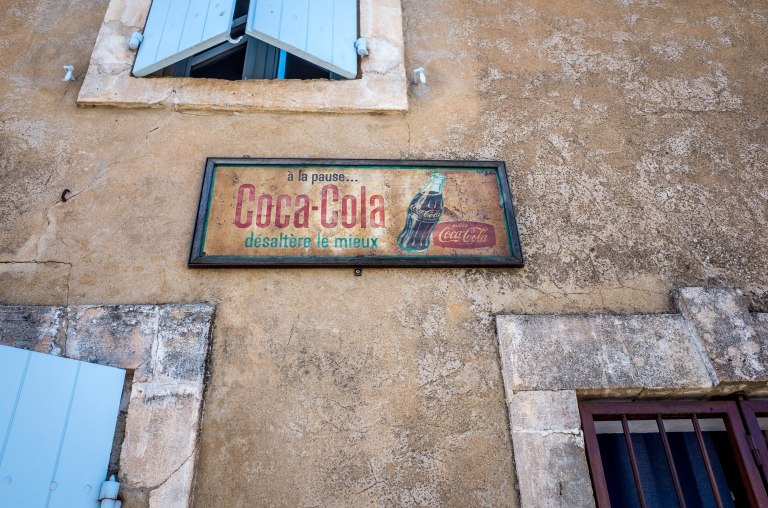
Quick detour to Roussillon…
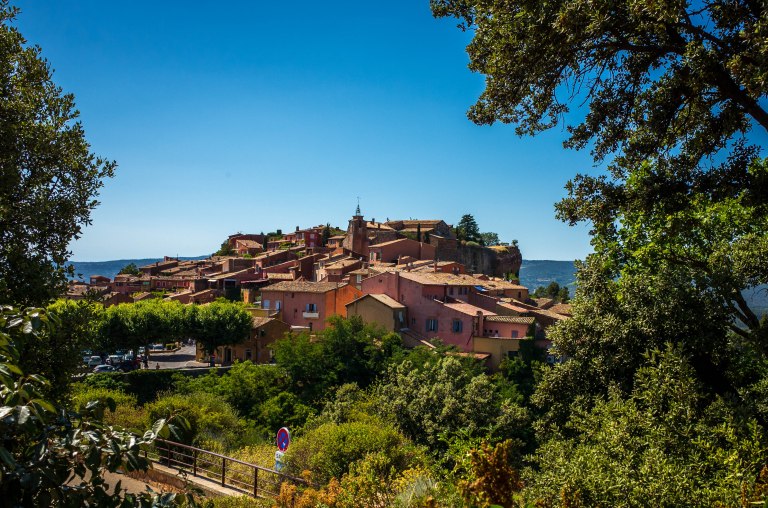

Valensole
I have always associated Provence with lavender. The violet fields stretching to the horizon are the showpiece of this part of France and I have seen plenty of pictures showing this exact landscape. So even though I have never been to Provence, I had an idea of what to expect. One thing that I had forgotten about was the fact that pictures reveal only a hint of what nature has to offer in real life. It turned out that I completely wasn’t prepared for the scenery that appeared to our eyes halfway between Apt and Verdon Gorge in a place called Plateau of Valensole. On a strictly need-to-know-basis, I’ll tell you now that it was a lavender paradise! Never in my wildest dreams had I imagined such a vast amount of lavender, with so many shades of purple and such an intense lavender scent. We were literally surrounded by kilometres of this fabulously scented shrub. The colours of the fields were changing from blue, through violet to deep purple while we were passing by the area. For anyone who comes to Provence, this place should be a must-see: covering approximately 800 km2, Plateau of Valensole is the biggest area in France devoted to growing lavender. The curious ones can discover step-by-step the process of distilling lavender in local distilleries and stock up on a broad range of lavender inspired gifts, from pure oils to lavender infused soaps, crèmes and shower gels.

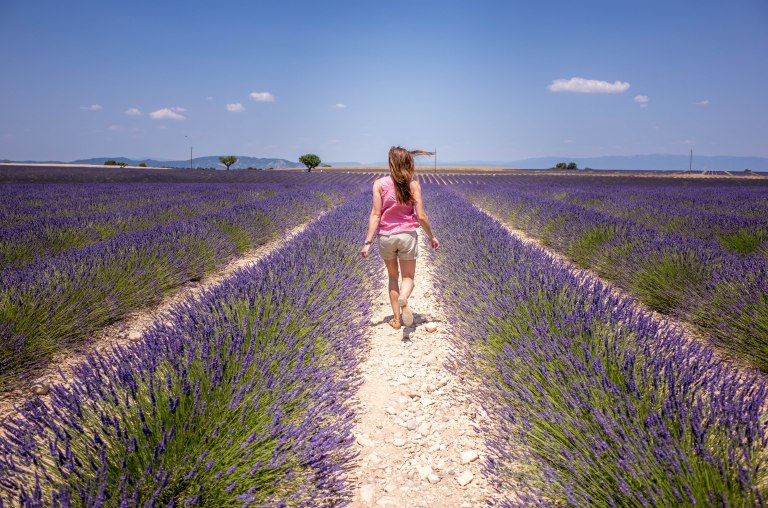
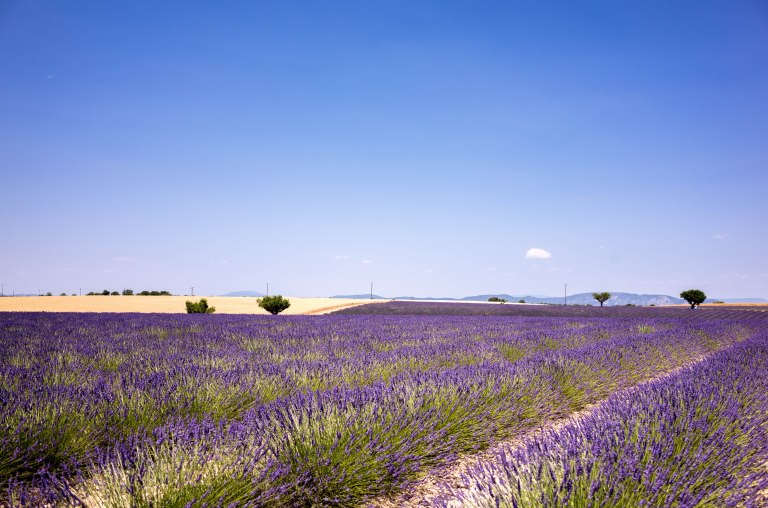
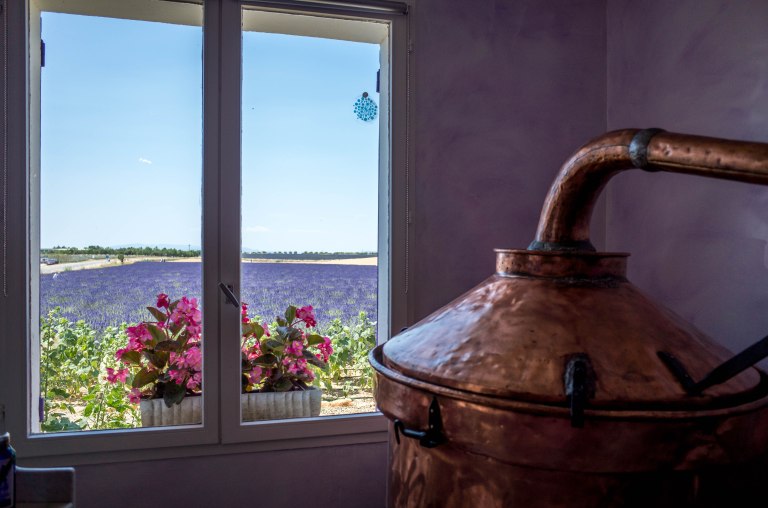
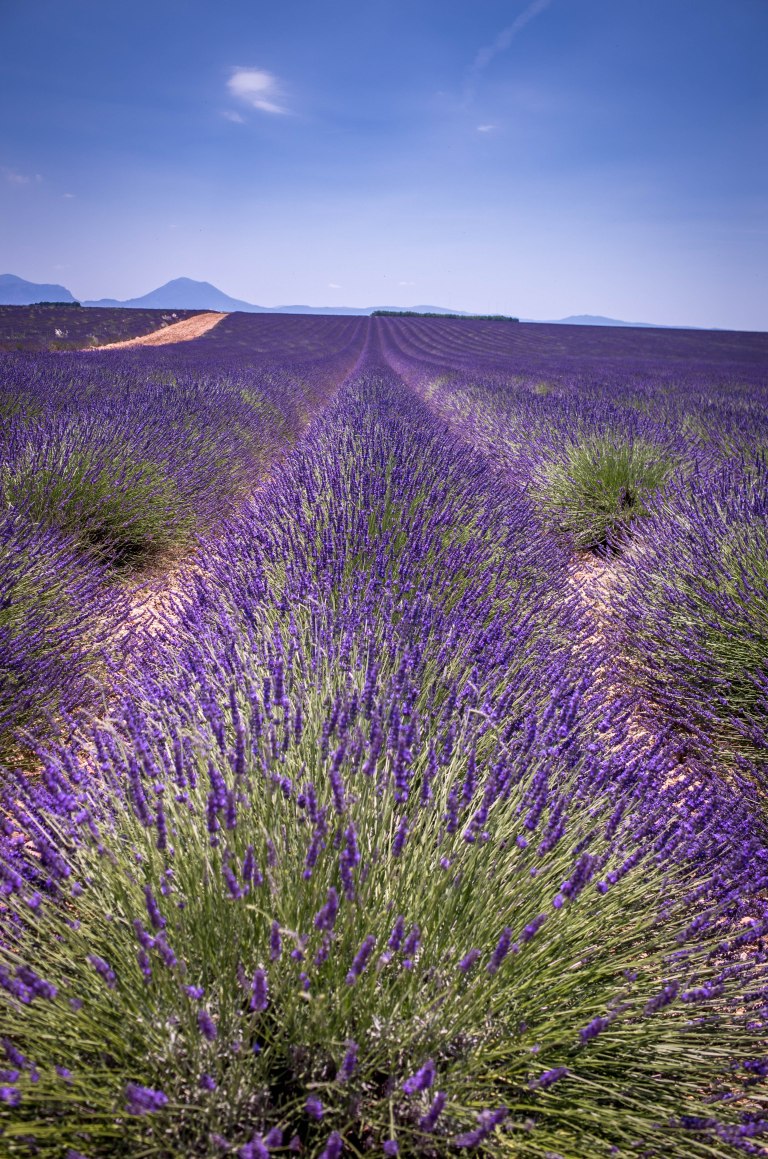
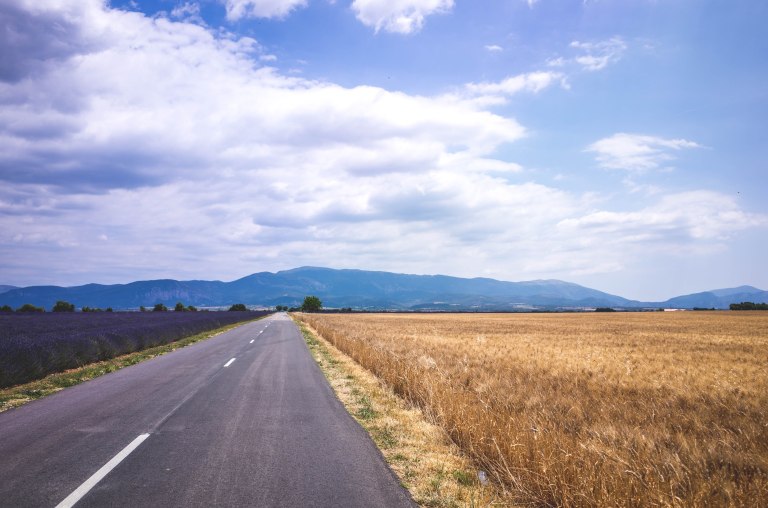
Moustiers-Sainte-Marie
Leaving the land of lavender behind, we headed towards the mountains which were slowly emerging in the distance. The closer to our new destination we got, the more fairy-tale the landscape seemed to became. The limestone rocks that we eventually reached looked like a huge wall that formed a border between the lavender plateau and the mountains hiding Verdon Gorge, one of the most picturesque canyons in Europe. At the bottom of the wall, between two cliffs separated with a creek, was a medieval village – Moustiers-Sainte-Marie. The pale yellow buildings set against the powerful rocks looked particularly good from our hotel La Ferme Rose, situated about 3km away from the village. Upon our arrival I went for a quick wander to explore the hotel’s neighbourhood. The scenery was simply idyllic. The warm afternoon sun beautifully illuminated the cliffs, and I felt slightly jealous of the paragliders who, flying above the village, could admire this gorgeous picture with a bird’s-eye view.
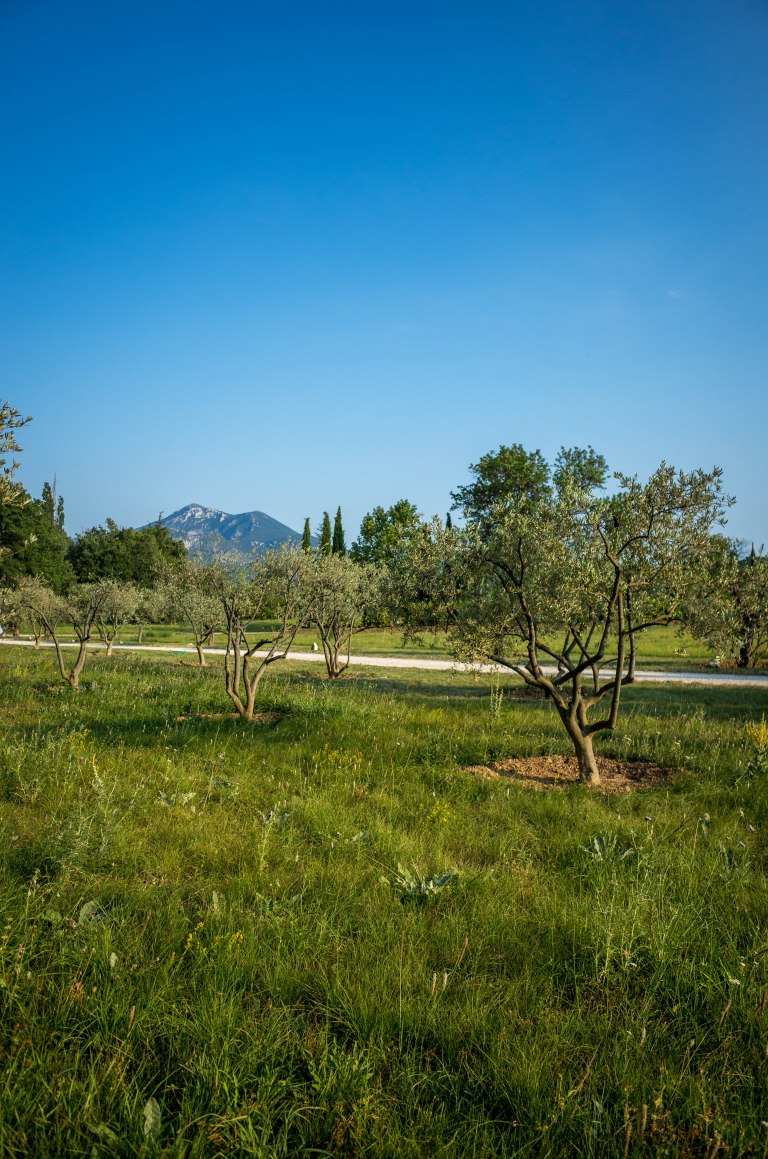
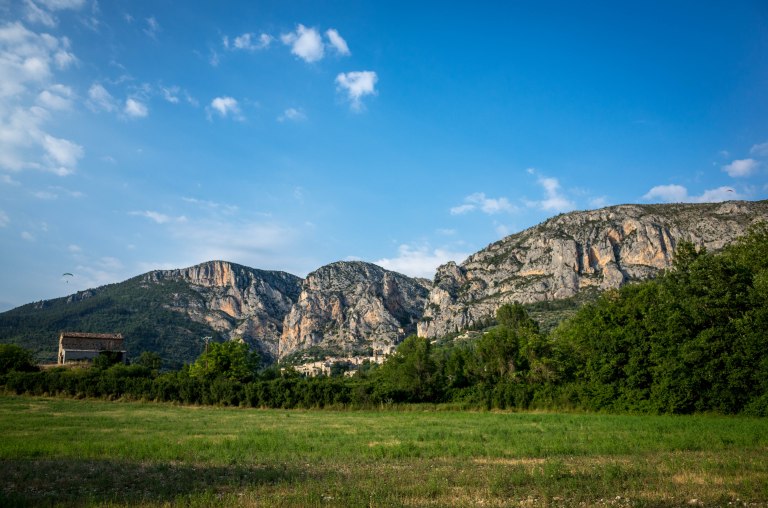
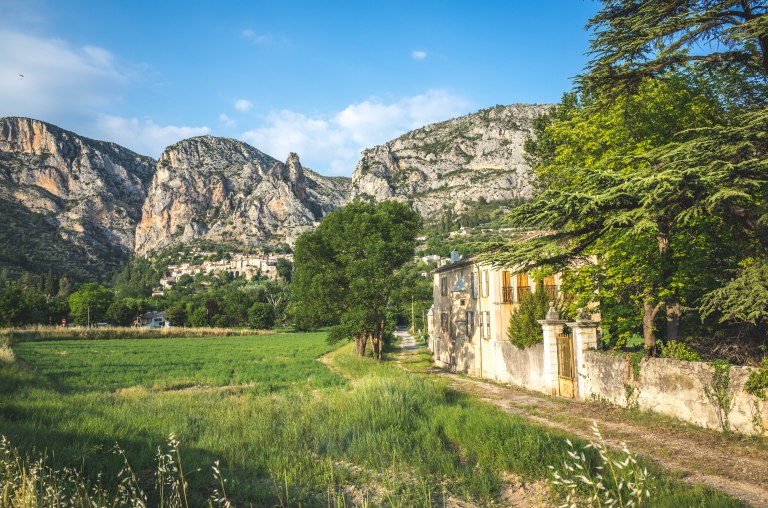
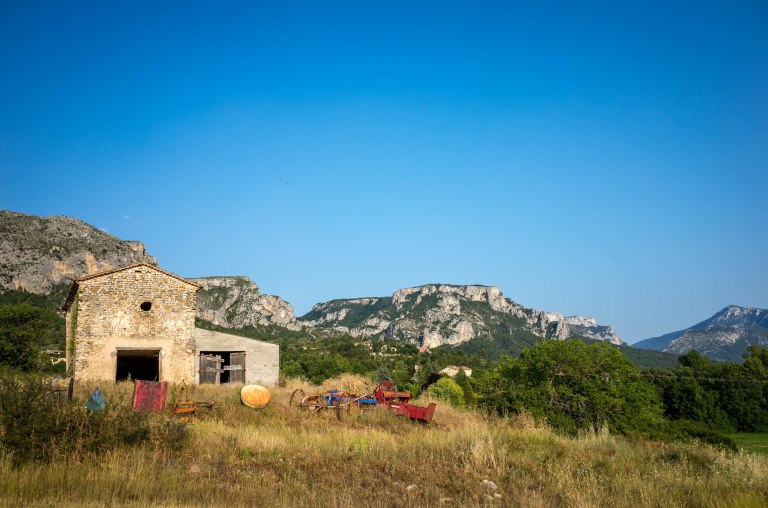
Moustiers-Sainte-Marie itself had an unforgettable character. High above our heads hung a star, measuring 1.25 m and covered in gold leaf, that had been suspended in 1957 between two rock ledges by a 135 m (Wikipedia says 225 m) long chain. Many legends explain the origin of the primary star (dated back to 10th century) but no one really knows who, when and how it was hung in the first place. Below the mysterious star, but still high enough to overlook the village, was the Notre-Dame-de-Beauvoir chapel built in the late 12th century. Its elevated location, combined with the surrounding cliffs, added to the enigmatic vibe of Moustiers. Mesmerized by the charm of this little village, I completely forgot about dinner. While the rest of the group was looking for a restaurant, I marvelled at the narrow streets leading to the small squares shaded with nicely branched trees. I admired the old, square Lombard bell tower which belongs to the parish church and is one of the rare moving bell towers listed in Europe. I listened to the burbling of the water, a result of the waterfall that was created by a spring flowing out of the cliff, and which divided the village into halves. The light of the sunset reflecting off the buildings and the rocks created a rather romantic atmosphere. Moustiers-Sainte-Marie definitely stole my heart, as did the location and surroundings of our hotel. La Ferme Rose may not have been very close to the village, but instead it offered tranquility and fantastic views over the fields and mountains. Amongst the tall and fuzzy cypresses, numerous palm and olive trees, we found secluded areas which were perfect to relax in. The hotel itself with the collection of clocks, metal irons, candlesticks, fans, siphons and many other random objects, plus a telephone room (!?), was one of the most bizarre places I’ve seen so far.
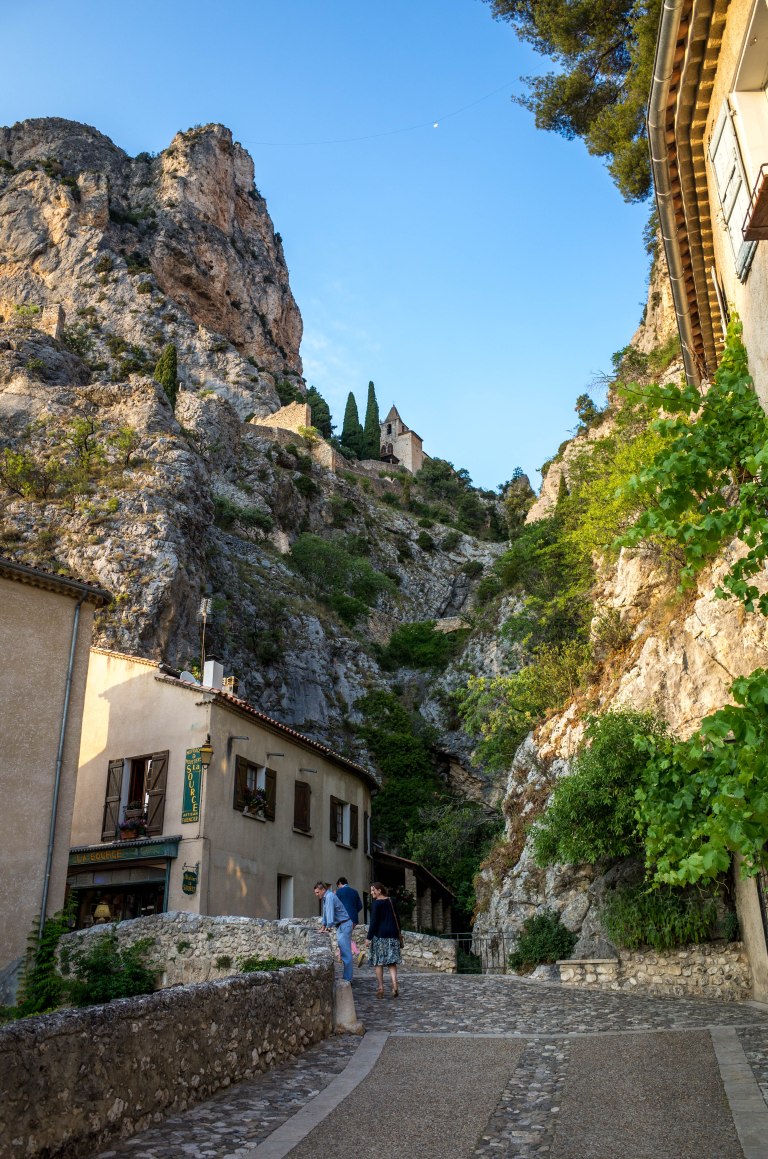
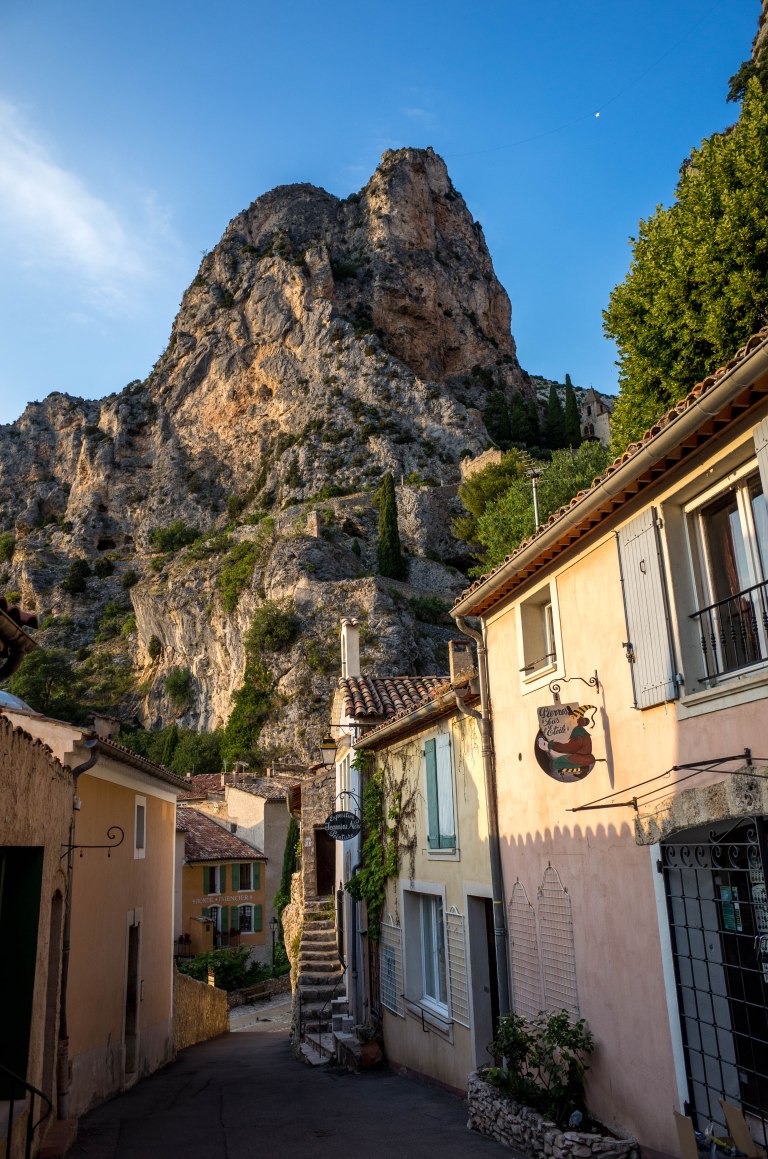
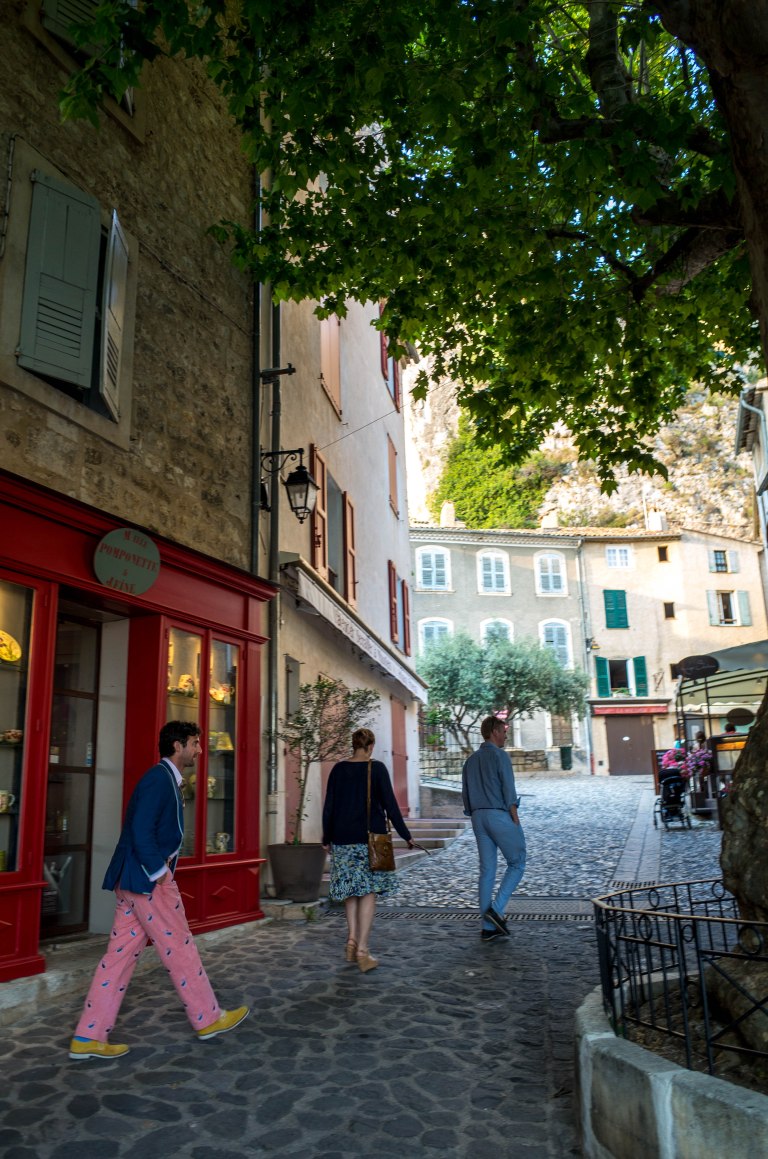
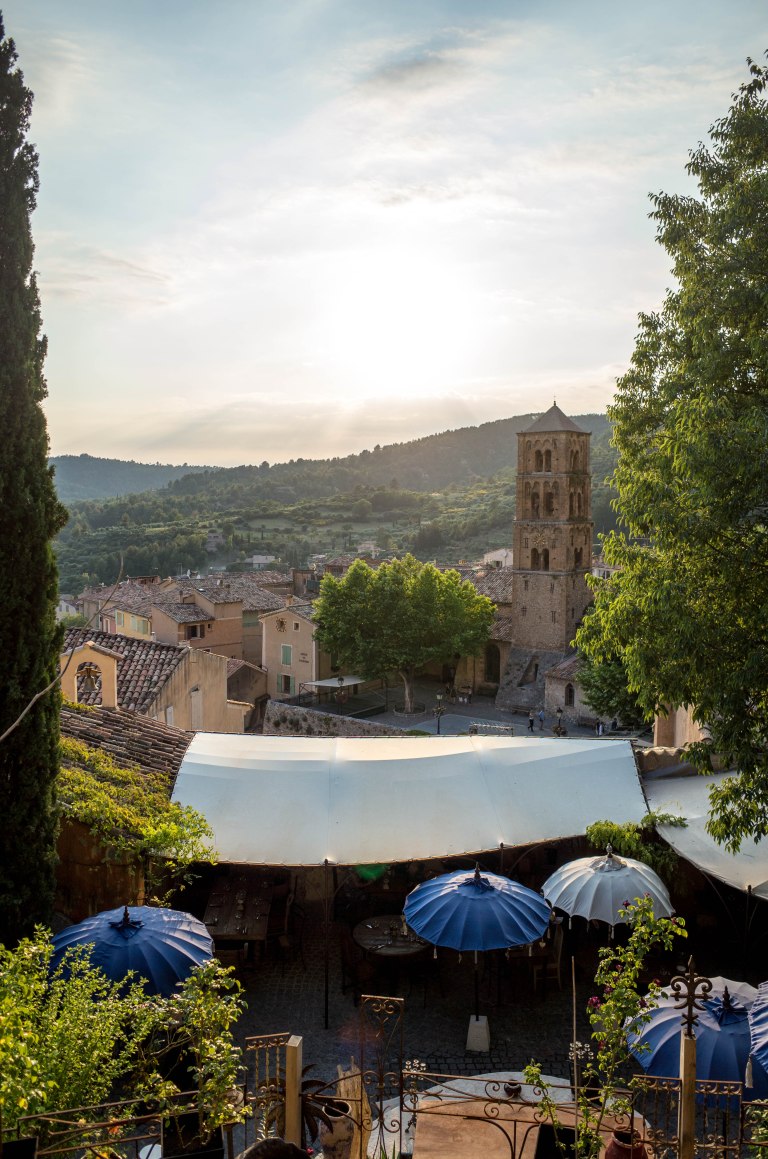
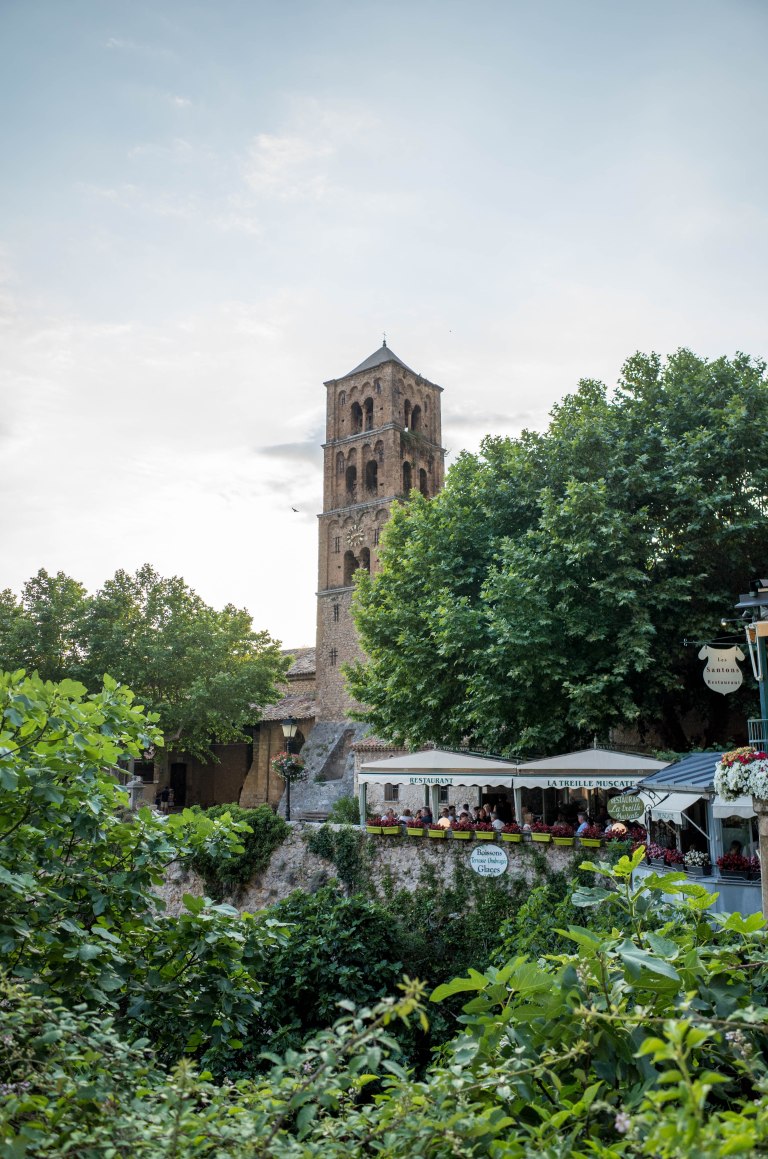
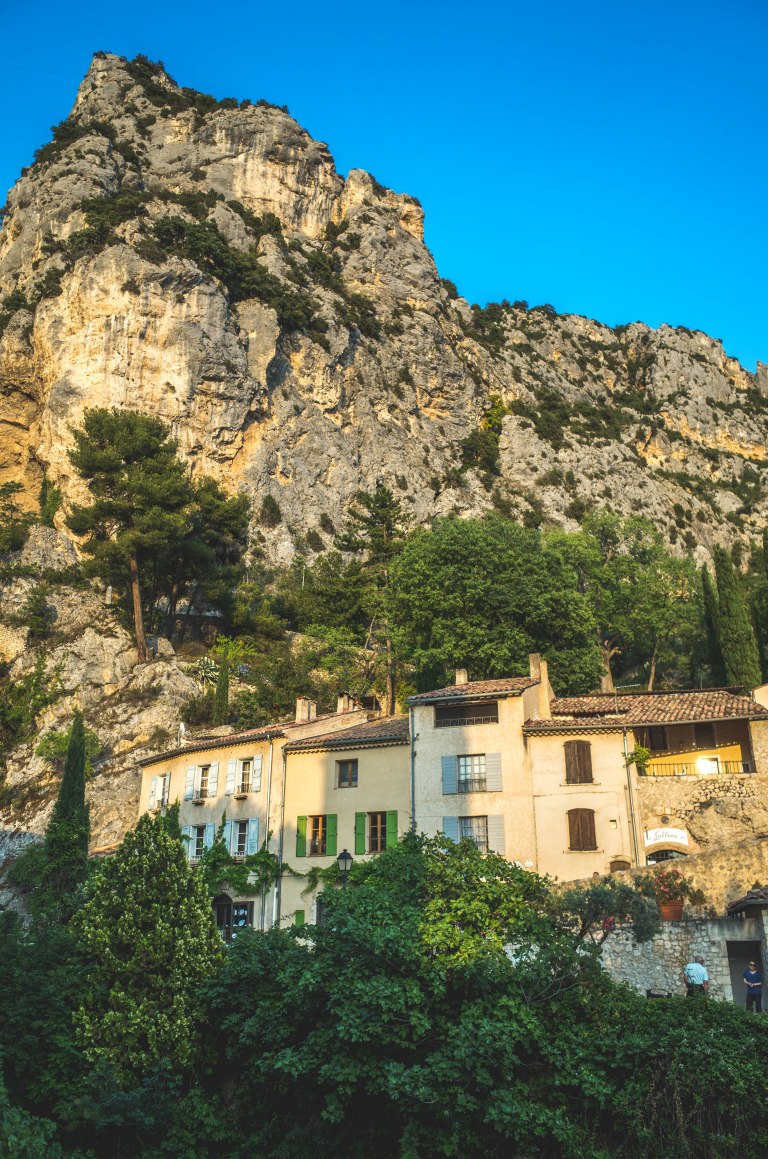
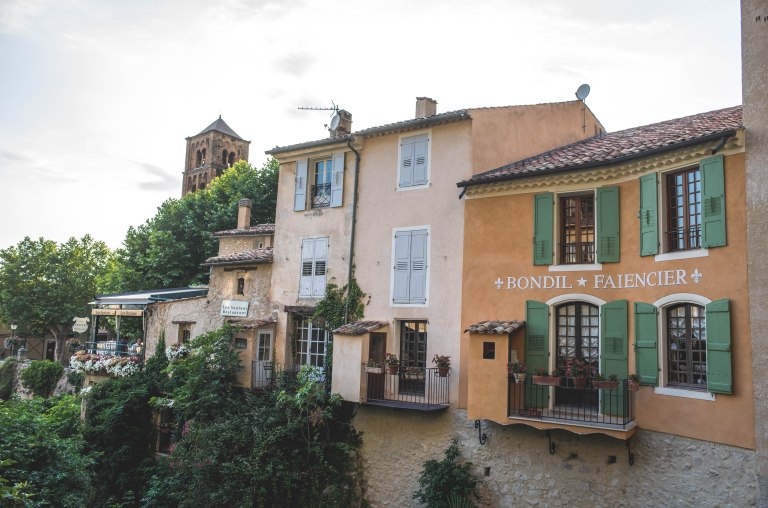
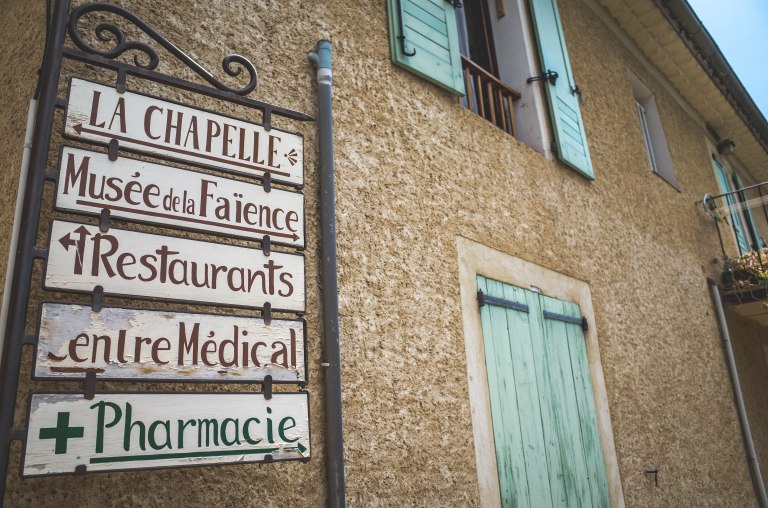

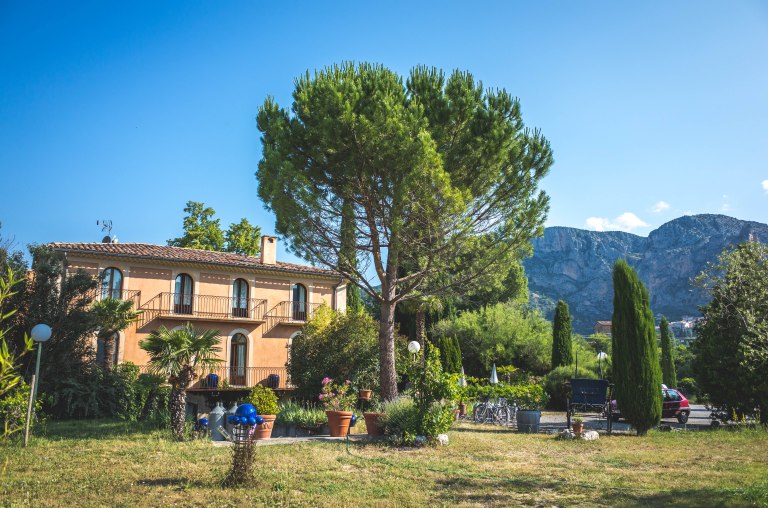
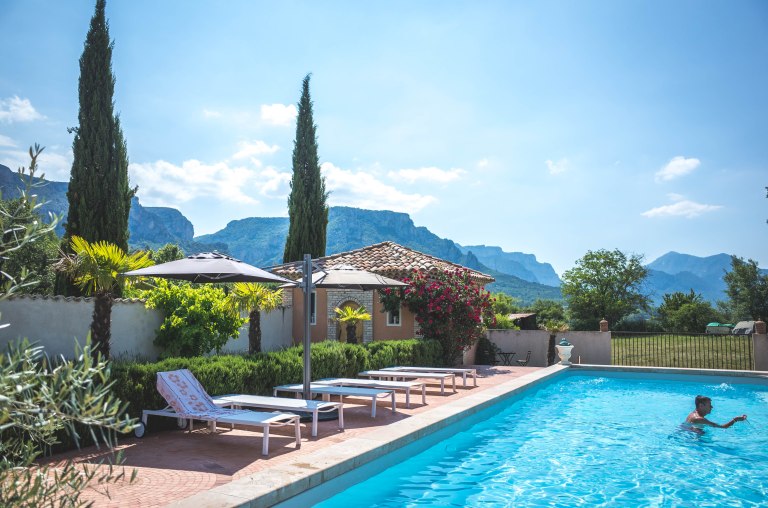
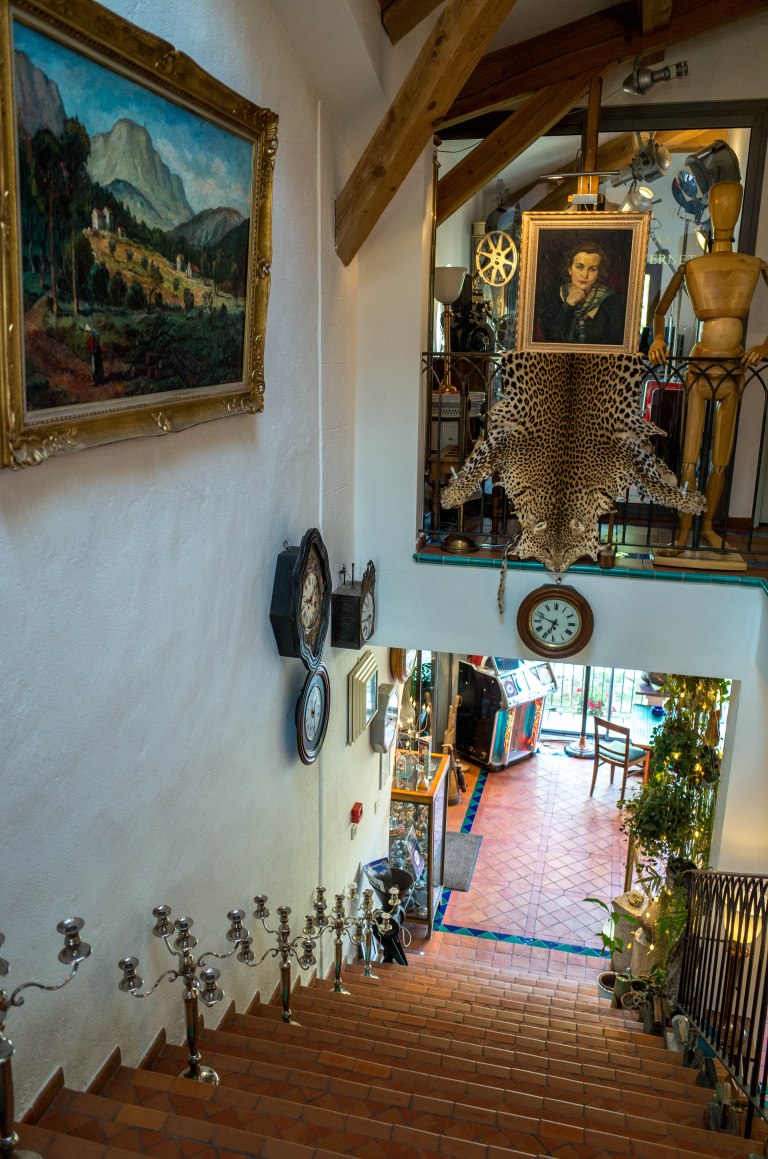
Verdon Gorge
I have to confess that I had not heard about Verdon Gorge before I decided to visit Provence. About 110 years ago, when the canyon was known mostly to the French population, it would have been acceptable but nowadays I have no excuse for my past ignorance of this European natural wonder. Fortunately, it didn’t take much time to find out about this place online, and once discovered it reached the top of my Provencal bucket list in the twinkling of an eye. I was fascinated, above all, by the visual beauty of the canyon, its size and outstanding colour of the river. Of course, there is also a wide range of activities which draw crowds to this place. Tourists are most often lured by hiking, bird watching or simply road tripping round the edge of the gorge but I personally think that nothing beats the experience of discovering the canyon from the very bottom. Paddling up the incredibly turquoise-green coloured river Verdon in a kayak, pedal boat or leisurely in an electric boat (our choice) provides an unusual opportunity to feel the enormity of the ravine that has been carved in the limestone rocks by the water for centuries. On top of that, this option also allows one to jump into the river to cool ones sun-warmed body. Swimming among such landscapes is an amazing experience and… so much fun! To complete our visit and get the full overview of the canyon, we decided to compare the view from the bottom with the view from the top. In a hurry, to make it back to the airport and to stop on the way for the last attraction, we only managed to do part of the scenic road trip round the north edge of the gorge. Even though we didn’t have enough time to do the full loop, we still had a fantastic preview. From the top the colours were more intense and the canyon looked even bigger than from the bottom. It was hard to believe that we were in Europe.
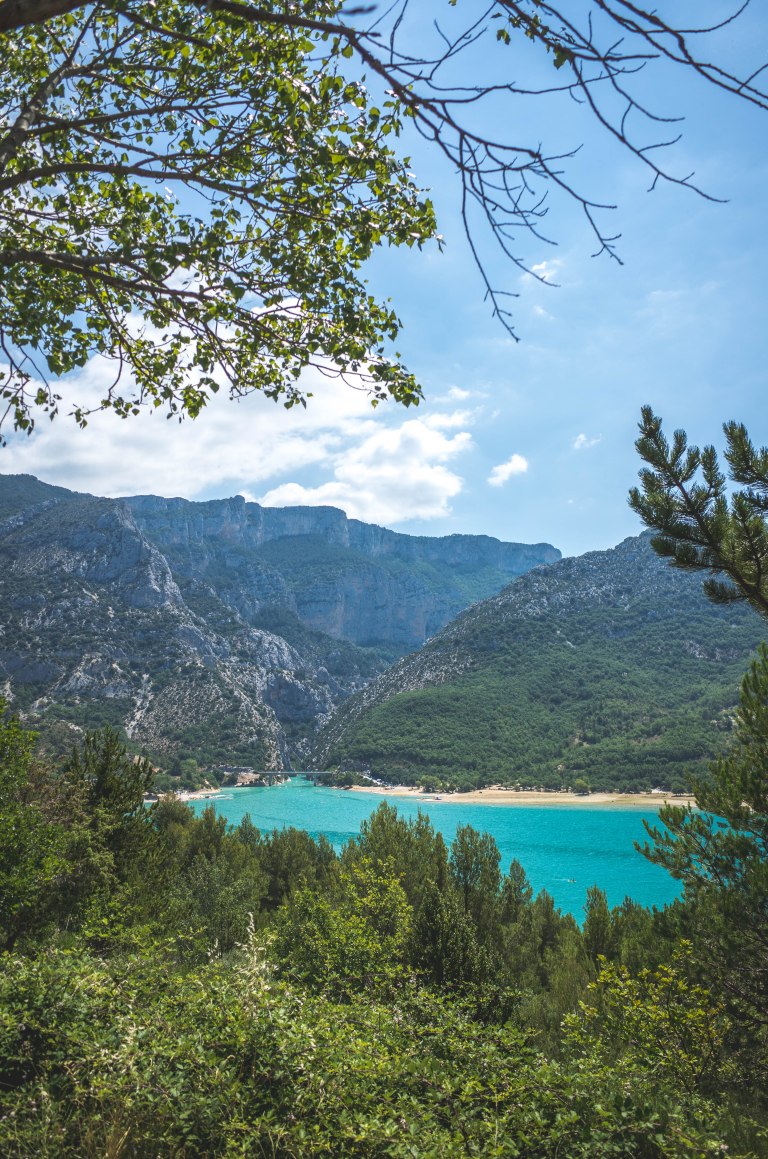

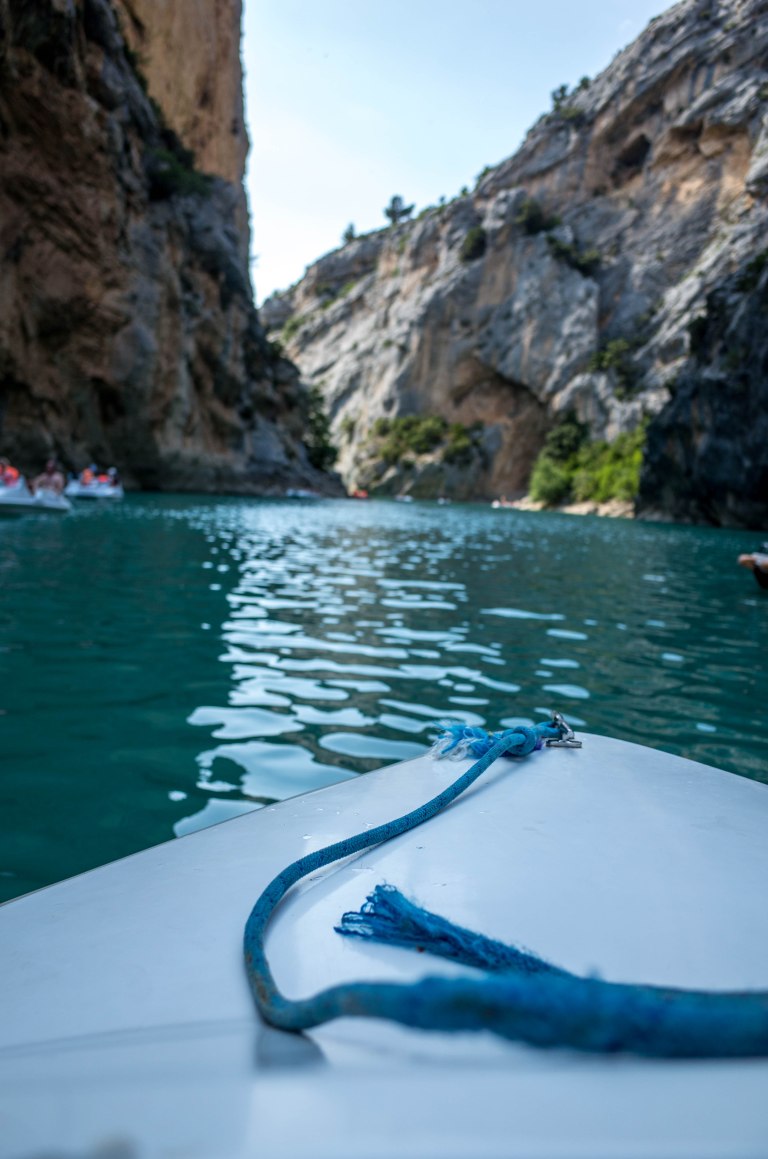
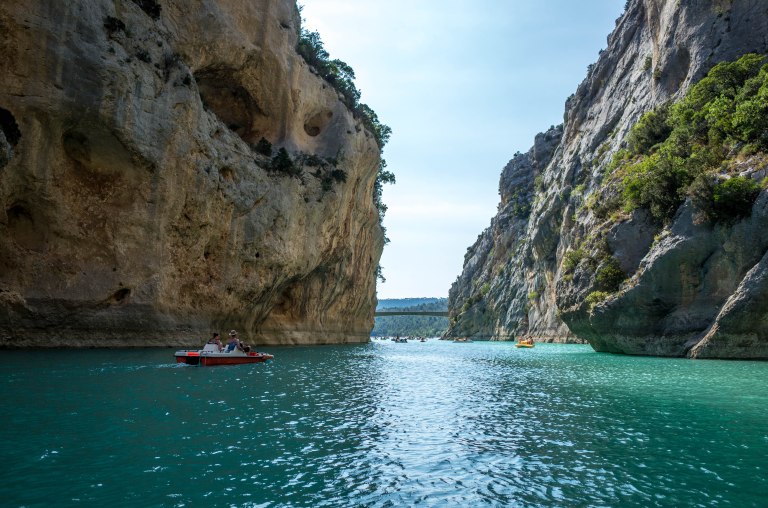
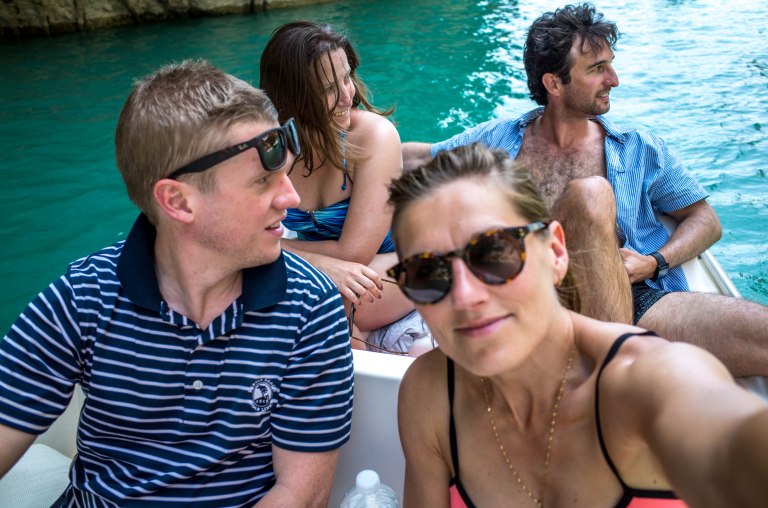
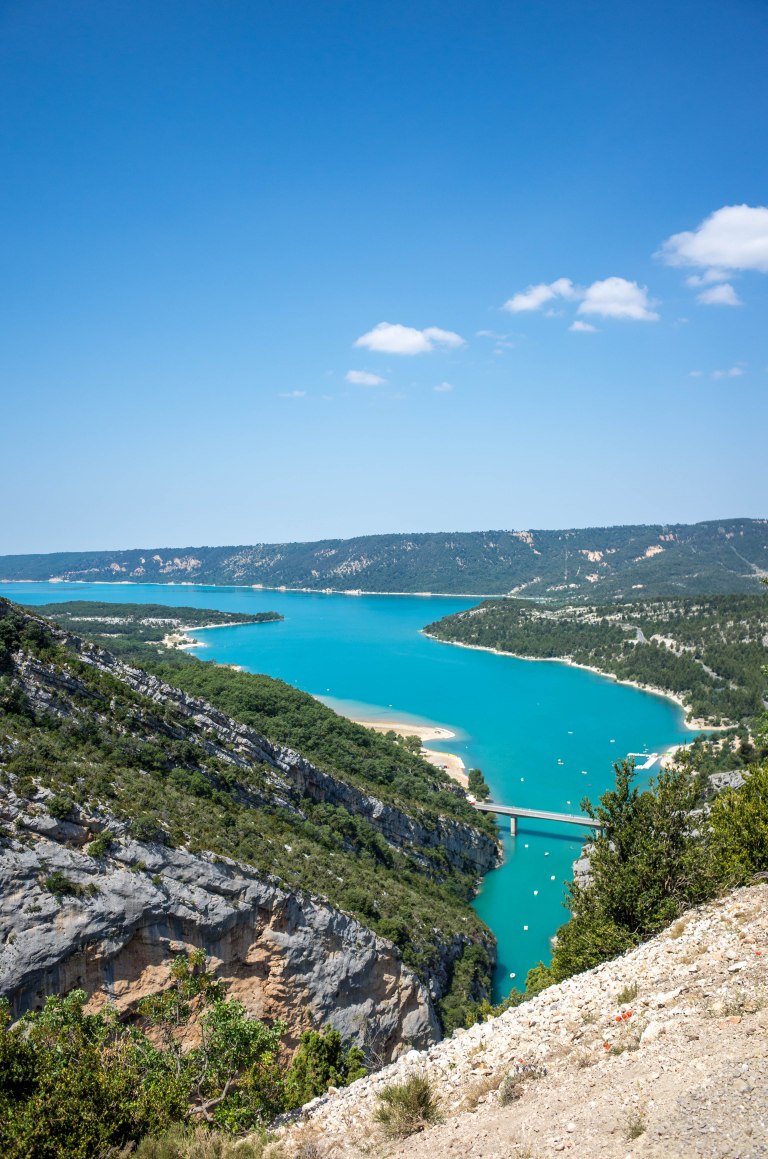
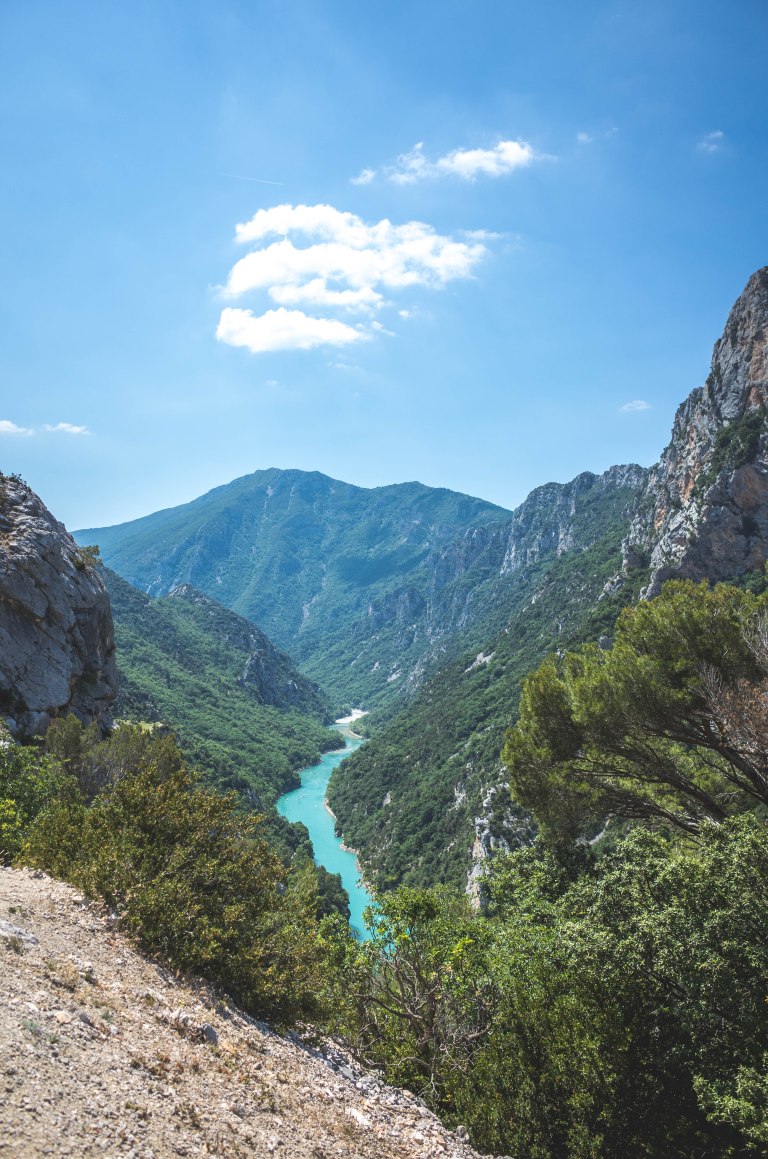
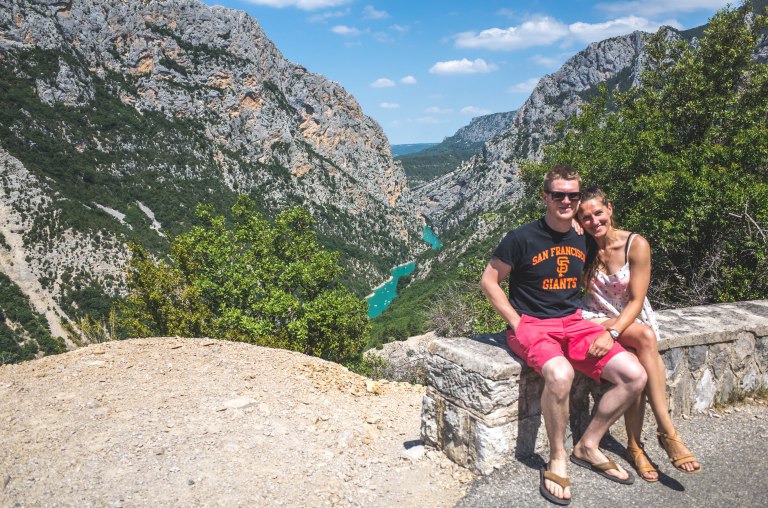
Sillans waterfall
Even being pressed for time and the fact that we eventually had to head back to the airport, we managed to squeeze in one last sight en route. The waterfalls in Sillans-la-Cascade were recommended to us by my French friend (Elodie, if you’re reading this – thank you!) and I was very keen to check them out. After finding the starting point of the trail, we followed it through the forest for a brisk 15 min walk which eventually brought us to the waterfalls. Not only had I found another little paradise in Provence but I also discovered a new shade of blue. The perfect celeste water was falling from the rocks into the natural pool where some of the locals were enjoying their spare time. We could only admire this view from a distance, as officially it was forbidden to pass through the fence and go down to the waterfalls. Obviously, the French don’t pay too much attention to the warning signs.
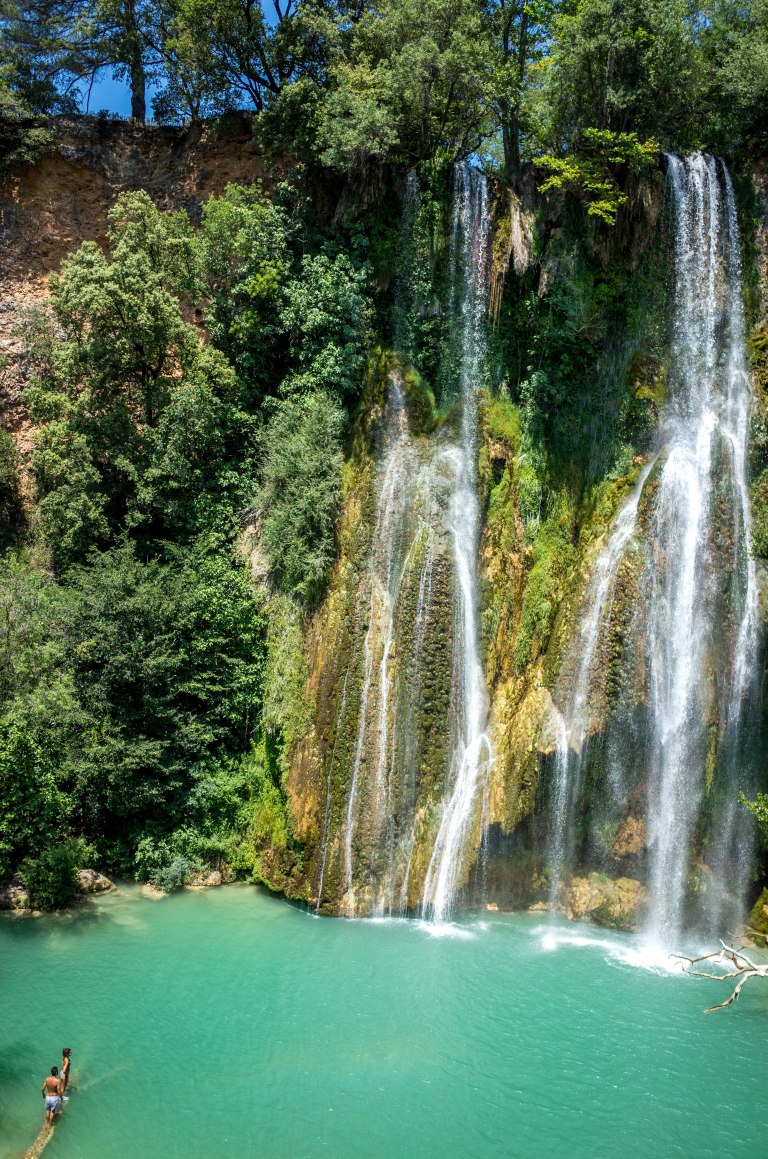
After 4 days of sightseeing, wine tasting, relaxing and road tripping, with plenty of beautiful pictures in my head, it was time to say goodbye to Provence. It turned out that it’s not the wine or the lavender that stand out in this region but one colour – blue. Blue like the lavender fields in Valensole. Blue like the French sky. Blue like the stunning colour of the River Verdon flowing in one of the most beautiful canyons in Europe… Blue will remind me of the most amazing places that we got to see during our trip in Provence.

You’re welcome Aneta! 😉
Lovely to read this after we just got back from Gordes and Roussillon ourselves – I really enjoyed your fresh perspective on things I used to take for granted, and whilst it’s making me feel nostalgic it is also making me feel lucky to still call it home 🙂
LikeLiked by 1 person
Thank you Elo! You are lucky indeed 🙂 This is such a beautiful region… It definitely wasn’t the last time I visited Provence.
LikeLike